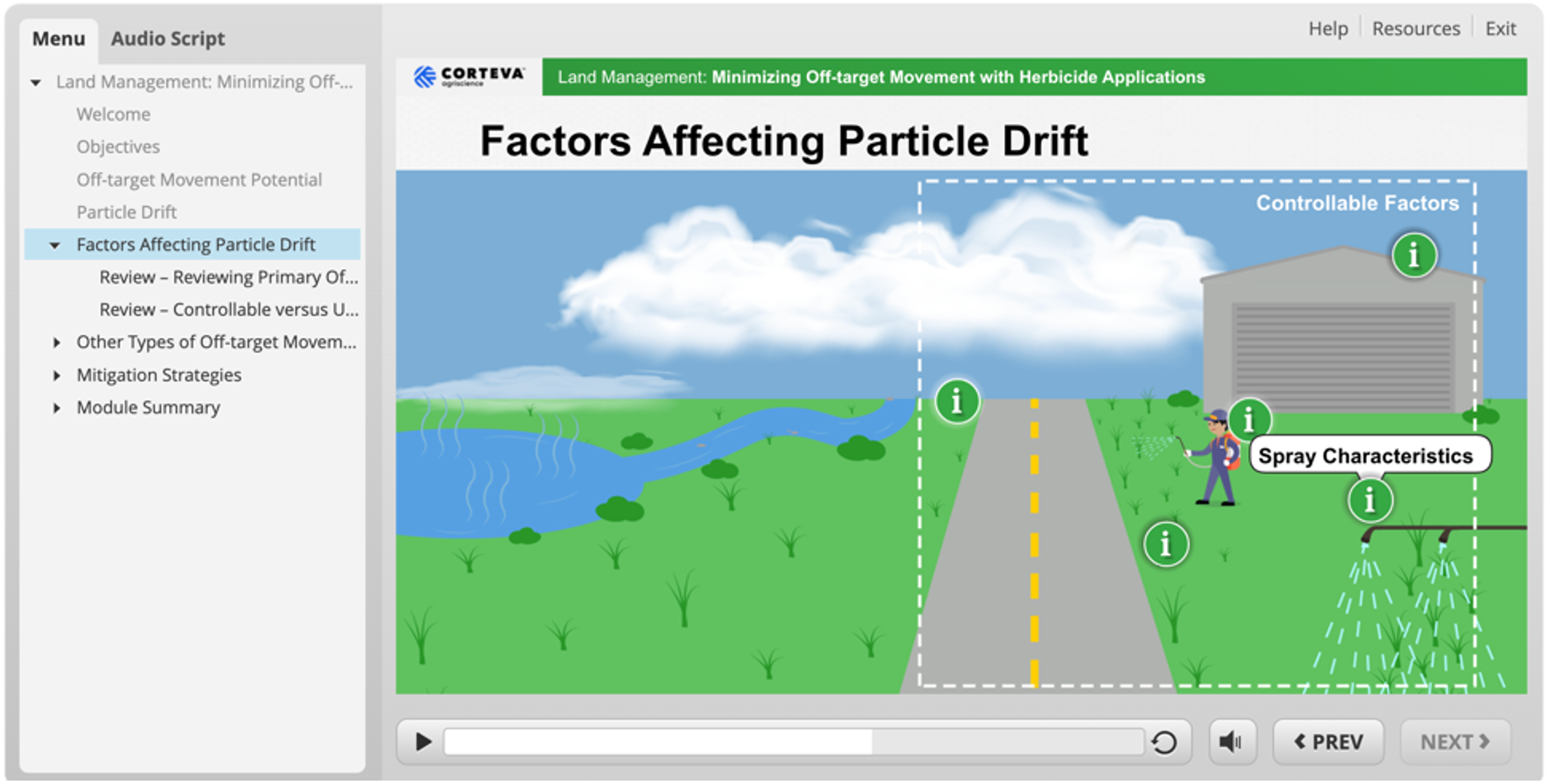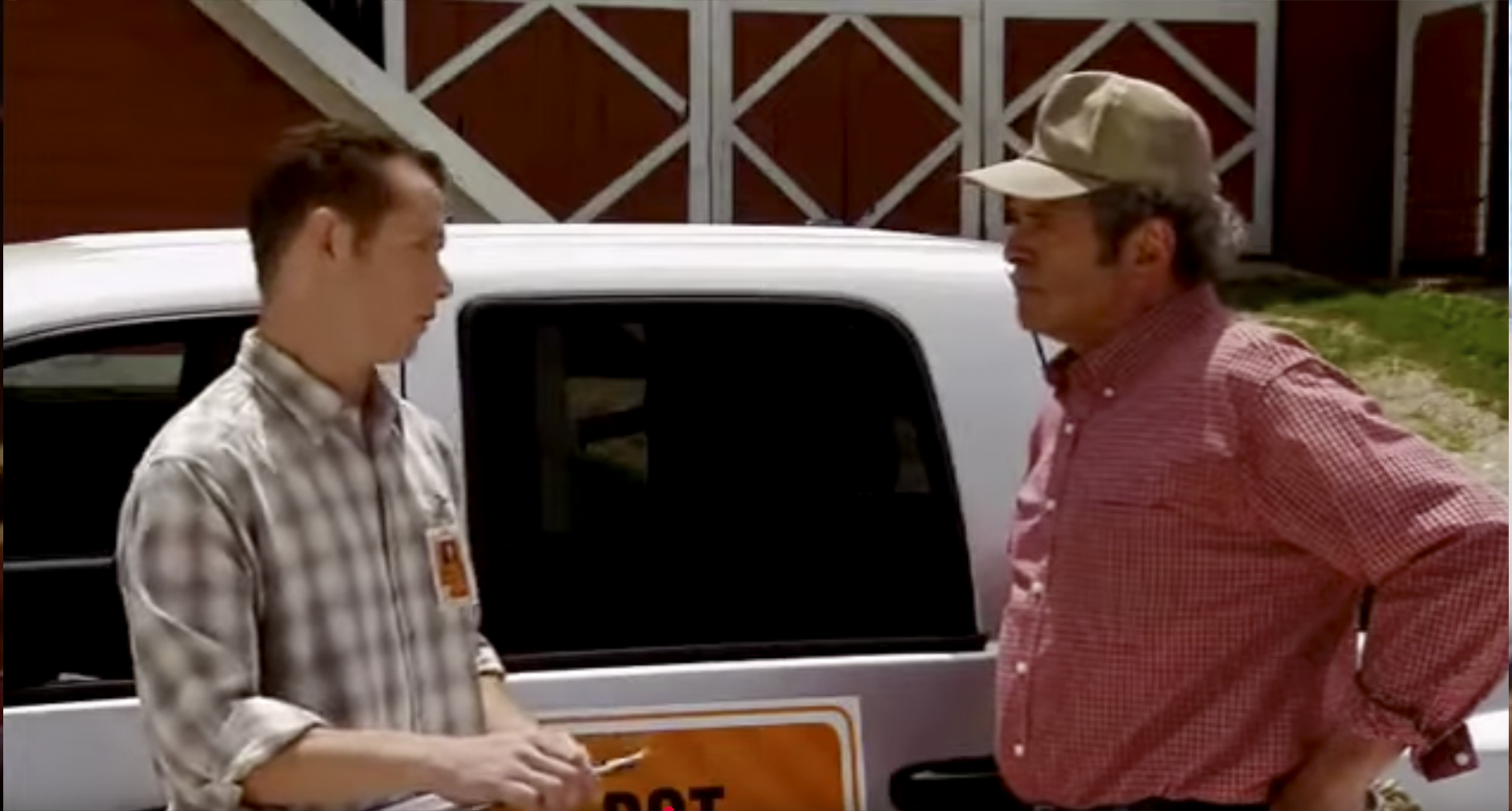Managing unwanted and invasive vegetation requires thoughtful planning and execution. When herbicides are part of an integrated vegetation management program, the process calls for even more care, expertise and communication.
Many land management teams rely on seasonal help that may require annual training. However, experienced and certified applicators can also benefit from a refresher in best practices and herbicide application nuances.
Of course, a good vegetation management program isn’t just about what you’re doing in the field. Since vegetation management often occurs in areas the community shares or that border private property, communication with the public is an equally essential part of the job.
To help with more effective and consistent herbicide applications and to facilitate positive communication, Corteva Agriscience developed a series of trainings and support resources. This information is free and available for vegetation and land managers to use in supplementing their own training programs and for sharing with stakeholders. Resources are available via two main tracks: Vegetation Education, which focuses on application, and Notify Your Neighbor, a program about positive public communication.
Vegetation Education
The Vegetation Education program includes digital training and multiple printed resources, such as rate cards, fact sheets and application guides, for Corteva Agriscience products.
The digital training comprises 10 self-paced modules on a range of application topics. Individual modules take about 25 minutes to complete, and you can select which modules are most relevant to your needs. Each trainee can create an individual account using their email and password. The website tracks module progress and trainees get a certificate for every module completed, which can be used as proof of training. The digital training is designed to keep learners engaged, with a variety of exercises and knowledge checks along the way.

VegetationEducation.Corteva.com features 10 self-paced e-learning modules.
Brian Songer, Assistant Supervisor for the Sheridan County Weed and Pest District in Wyoming, went through the Vegetation Management e-learning courses in 2024. In 2025, he plans to use them with seasonal workers as a supplement to the district’s own training.
Songer found the training particularly helpful because he’s relatively new to the industry. “There was a lot of good information and a lot of it applied directly to what we do,” Songer said.
Sheridan County is semi-arid with grasslands, rangelands and plenty of farmland. Songer’s team treats rights-of-way along county roads to control invasive weeds, and later in the season, heads into the nearby Bighorn National Forest to address state- and county-listed weeds and invasive annual grasses along rights-of-way, trails and pastures. They tackle the job with a team of just six to eight workers, most of them seasonal hires, who go through two days of in-person group training.
Songer plans to incorporate several Vegetation Education modules into this live training experience. “The people we hire have to listen to us for two days,” Songer noted. “It’s helpful to have other sources of material to keep them motivated and interested.”
Songer especially appreciates the knowledge checks in the modules. “Understanding Herbicide Toxicity,” “Minimizing Off-Target Movement,” “Herbicide Mixing, Handling and Storage” and “Why Herbicides Sometimes Fail” are among the modules he plans to use alongside the district’s curriculum.

The Vegetation Education e-learning modules use bite-sized lessons with interactive exercises and knowledge checks to keep trainees engaged.
Songer said having training directly from Corteva, as the herbicide manufacturer, provides additional depth and a different perspective than information that’s available from other sources. He also likes having a chance to explore and learn about other topics that may not directly relate to his work but can help him be more informed. “The Integrated Vegetation Management module, for example, is focused on utility rights-of-way. That’s not what we do,” he said, “but it’s good to understand how everything works together. And hearing about how people are managing weeds in those settings gives me more perspective for my own work.”
Notify Your Neighbor
Notify Your Neighbor is another training resource from Corteva Agriscience, focused on improving public communication. This resource has five components developed to help vegetation and land managers enhance compliance, reduce complaints and increase treatment efficiency.

Notify Your Neighbor includes resources for vegetation managers and the public.
As with Vegetation Education, Notify Your Neighbor includes several downloadable resources, such as the Notify Your Neighbor Resource Guide and a “Message to Our Neighbors” brochure that can be provided to the public.
One of the most notable features of Notify Your Neighbor is a series of videos demonstrating good (and bad) communication techniques that walk through realistic scenarios — like how to talk to a farmer who’s worried that vegetation management herbicides will drift to his fields. The program website also walks through two simple and practical techniques (INFORM and ABC) for effective communication. These methods help land managers and applicators have productive conversations to foster better understanding and a positive view of integrated vegetation management techniques with the community.

The Notify Your Neighbor program features short videos on practical techniques for talking with landowners and the public.
Vegetation Education and Notify Your Neighbor were both created to help address real, in-the-field challenges of vegetation management. By improving application knowledge, practices and communication, these free training programs and resources are aimed at making the important work you do protecting infrastructure and landscapes more efficient and enjoyable.
To learn more and access resources, please visit:
VegetationEducation.Corteva.com
Notify Your Neighbor




